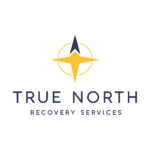Recovery from addiction is a journey filled with challenges, triumphs, and, at times, setbacks. Among these setbacks, two terms often emerge: “slip” and “relapse.” While they might seem similar, understanding the distinction between them is crucial for anyone on the path to sobriety. This comprehensive guide delves into the difference between a slip and relapse, explores relapse warning signs, and offers insights into maintaining long-term recovery.
What Is a Slip?
A slip, also known as a lapse, refers to a brief, unplanned return to substance use. It’s typically a one-time event where an individual consumes a substance but quickly recognizes the mistake and recommits to sobriety. Slips are often impulsive and not indicative of abandoning the recovery journey.
Key Characteristics of a Slip:
- Brief Duration: The substance use is short-lived.
- Immediate Recognition: The individual acknowledges the mistake promptly.
- Recommitment to Recovery: There’s a swift return to recovery efforts.
- Minimal Impact: While emotionally distressing, slips don’t necessarily derail the entire recovery process.
Understanding that slips can occur helps reduce the stigma and guilt associated with them, allowing individuals to focus on learning and growth.
What Is a Relapse?
In contrast, a relapse signifies a return to substance use after a period of abstinence, often involving a conscious decision to abandon recovery efforts. Relapses are more prolonged and can indicate deeper issues that need addressing.
Key Characteristics of a Relapse:
- Extended Duration: Substance use continues over a period.
- Abandonment of Recovery: There’s a cessation of recovery activities and support systems.
- Potential for Harm: Relapses can lead to significant physical, emotional, and social consequences.
- Need for Intervention: Often requires renewed treatment or support to regain sobriety.
Recognizing the signs of relapse early can prevent a full-blown return to addiction.
Difference Between a Slip and Relapse
Understanding the difference between a slip and relapse is vital:
| Aspect | Slip | Relapse |
|---|---|---|
| Duration | Short-term, one-time event | Prolonged return to substance use |
| Intent | Often accidental or impulsive | Conscious decision to resume substance use |
| Recovery Commitment | Maintained | Abandoned |
| Intervention Needed | May not require formal treatment | Often necessitates renewed treatment efforts |
Recognizing this distinction empowers individuals to respond appropriately to setbacks.
Relapse Warning Signs
Relapse doesn’t happen overnight; it’s a process that unfolds in stages. Being aware of relapse warning signs can help individuals and their support systems intervene early.
Emotional Relapse
- Mood Swings: Increased anxiety, irritability, or depression.
- Isolation: Withdrawing from friends, family, or support groups.
- Neglecting Self-Care: Poor eating habits, sleep disturbances, or neglecting personal hygiene.
Mental Relapse
- Cravings: Intense desires to use substances.
- Romanticizing Past Use: Glorifying previous substance use experiences.
- Planning Relapse: Thinking about ways to obtain and use substances.
Physical Relapse
- Actual Use: Returning to substance use, marking the culmination of emotional and mental relapse stages.
By identifying these signs early, individuals can take proactive steps to prevent a full relapse.
Strategies to Prevent Relapse
Maintaining sobriety requires ongoing effort and vigilance. Here are strategies to prevent relapse:
- Develop a Relapse Prevention Plan: Outline potential triggers and coping mechanisms.
- Engage in Therapy: Regular sessions with a therapist can address underlying issues.
- Build a Support Network: Surround yourself with supportive friends, family, and peers.
- Practice Self-Care: Prioritize physical health, sleep, nutrition, and stress management.
- Stay Active in Recovery Communities: Participate in support groups or 12-step programs.
Implementing these strategies can fortify one’s commitment to recovery.
How True North Recovery Services Supports Your Journey
At True North Recovery Services, we understand the complexities of addiction and the challenges of maintaining sobriety. Our mission is to guide individuals away from substance abuse toward self-discovery and a fulfilling life.
Our Approach:
- Holistic Treatment: Addressing the physical, emotional, and psychological aspects of addiction.
- Personalized Care: Tailoring treatment plans to meet individual needs.
- Comprehensive Services: Offering outpatient addiction treatment, including support for opioid and alcohol use disorders.
- Experienced Team: Our dedicated professionals, many with personal recovery journeys, provide compassionate care.
By fostering a supportive environment, we help individuals navigate setbacks like slips or relapses, ensuring they remain on the path to recovery.
Understanding the nuances between a slip and a relapse is crucial in the recovery journey. While slips are brief and often unintentional setbacks, relapses signify a more significant return to substance use. Recognizing relapse warning signs and implementing preventive strategies can safeguard against full-blown relapses.
Remember, recovery is not a linear path, and setbacks don’t equate to failure. With the right support and resources, like those offered at True North Recovery Services, individuals can overcome challenges and continue progressing toward lasting sobriety.
If you or a loved one is struggling with addiction, don’t hesitate to reach out. Let us help you find your true north.


